The Indian e-commerce industry is on fire, and there’s no stopping it. In fact, according to Statista, the industry’s revenue is predicted to soar to a staggering $71.29 billion by 2023, with an estimated 13.9% growth rate between 2023 to 2027, eventually reaching a whopping $120 billion. With the number of online shoppers in India set to skyrocket to 400 to 450 million by 2027, it’s no wonder that the competition is fierce. E-commerce giants like Amazon and Flipkart are dominating the market, with other big names such as JioMart, Tata Digital, Nykaa, and Meesho hot on their heels.
So, what sets successful e-commerce brands apart from the rest? The answer lies in building and nurturing strong customer relationships. And the most effective way to do it is Email marketing.
In fact, a whopping 69% of marketers use email marketing as one of their primary channels for content distribution. The best part? The industry average ROI for email marketing is a staggering $36 for every dollar spent. But, for e-commerce companies, this number jumps to an impressive $45 per dollar spent.
In this article, we’ll delve into the most powerful email marketing strategies for e-commerce brands looking to establish a community of loyal customers and supercharge their sales. From crafting personalized and engaging content to optimizing email campaigns for maximum impact, we’ve got you covered. So, whether you’re a seasoned e-commerce pro or just starting out, read on to discover how to take your brand to the next level with the power of email marketing!
Strategy #1: Personalize emails to nurture relationships and build trust

With research indicating that personalized emails have significantly higher open rates and click-through rates, it’s no wonder that businesses are scrambling to personalize their emails. And why not! When personalized emails can improve your click rates by almost 139%.
In a world where individuals receive over 100 emails on average daily, you need to ensure that your emails stand out and provide value to your customers. Generic emails simply won’t cut it. By personalizing your emails, you can make your customers’ lives easier by sending them content that is relevant to their specific needs.
For instance, let’s assume a new dog owner was checking out dog food on your webstore. When you send them recommendations of dog food based on dog sizes and breeds or give them special offers on certain brands of dog food, it helps them make an informed decision.
And when your buyers see that you understand and help them, it encourages them to share more data with you, which further helps personalize your email marketing campaigns.
Customers’ demographics can be used to personalize your e-commerce emails, such as their name, age, income level, location, etc. For example, if the customer’s location faces heavy rainfall, one can suggest monsoon-specific garments, skincare, haircare, or health supplements. Email signup forms can ask subscribers about their basic details, which can be used for demography-based personalization.
Behavioral personalization refers to sending emails based on the customer’s browsing and purchasing patterns. You may have seen how e-commerce companies like Flipkart or Amazon send you recommendations based on browsing behavior.
In contextual personalization, the buyer’s journey is taken into account. Let’s assume a customer is researching sneakers on your website. It would be helpful to send them more content, such as a blog post or an article, that would assist them in making a decision based on their specific needs. When the customer appears ready to buy, showing product features, prices, and promotional offers is a good idea.
And the results speak for themselves. Saudi Arabia’s leading e-commerce brand, Hnak.com, was facing challenges with attracting the right audience due to limited personalization and segmentation. With the help of WebEngage’s email campaign management, which included hyper-personalization based on real-time customer data, HNAK increased its average email open rate by 30% and its cart abandonment rate declined by 67%.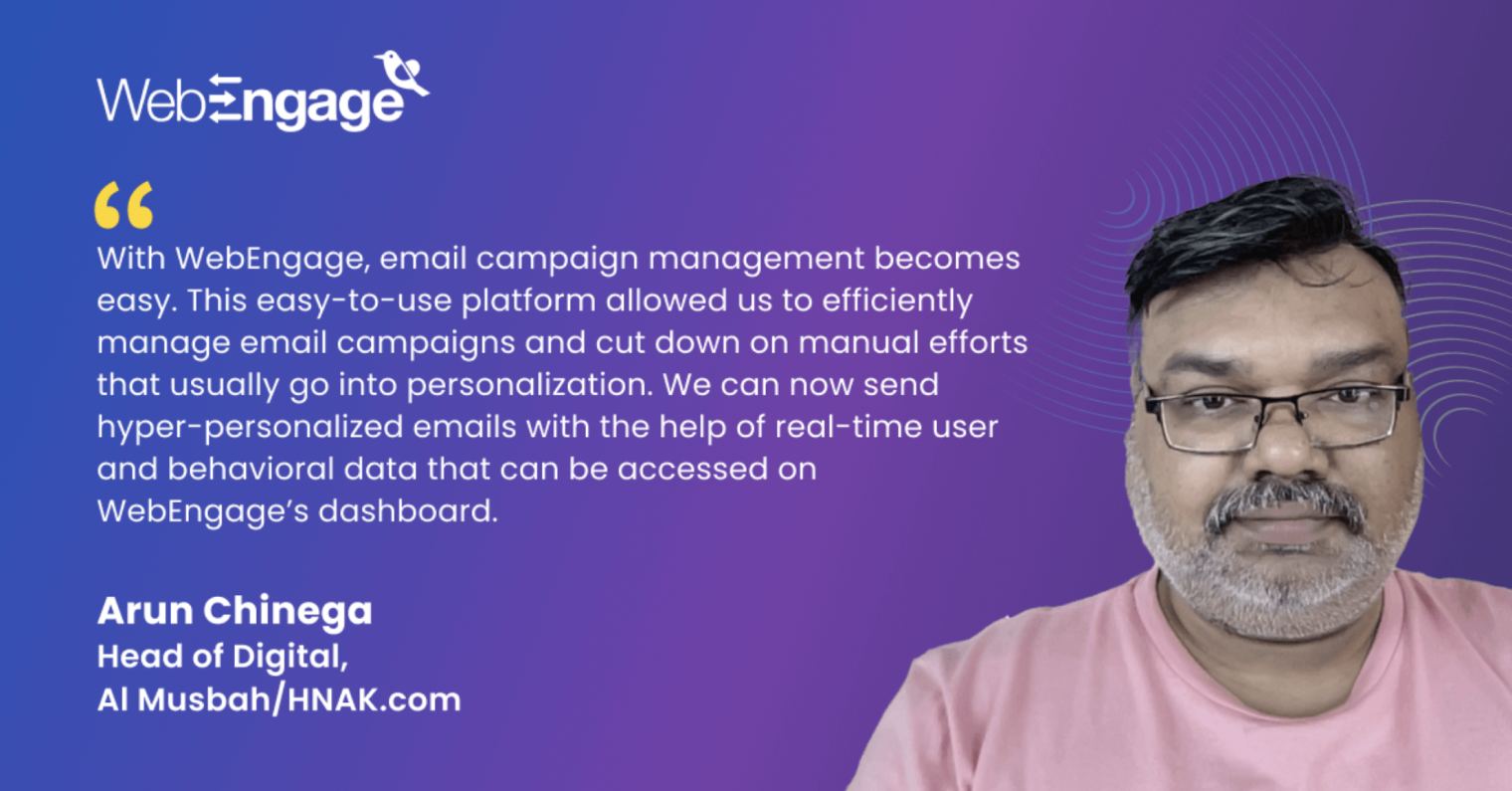
Strategy #2: Focus On Dynamic Content
Do you want to increase your email open rates and double your return on investment? Look no further than dynamic content. This personalized content can include user-specific product recommendations, tailored calls to action, and offers specific to each customer.
Studies suggest dynamic content can increase your email ROI by a whopping 100%, making it the foundation for building strong relationships with your audience. It’s like gifting your subscribers with personal shopping assistants who know exactly what they want and need.
Remember that the purpose of dynamic content isn’t only to make sales. It also aims to educate and nurture early and mid-stage buyers motivating them to make their first purchase. Dynamic content is the foundation for building strong relationships with your audience.
Consider the case of Speero, Saudi Arabia’s largest automotive aftersales marketplace. Using WebEngage’s Dynamic Segmentation and Funnel Analytics, the Speero team gained valuable customer insights that helped grow their overall revenue by 25% and increased the orders of cart abandoners by 189%.
Dynamic content is the key to standing out in a sea of generic emails and building a loyal customer base. Start using it today and watch your email marketing campaign thrive.
Strategy #3: Leverage User-Generated Content
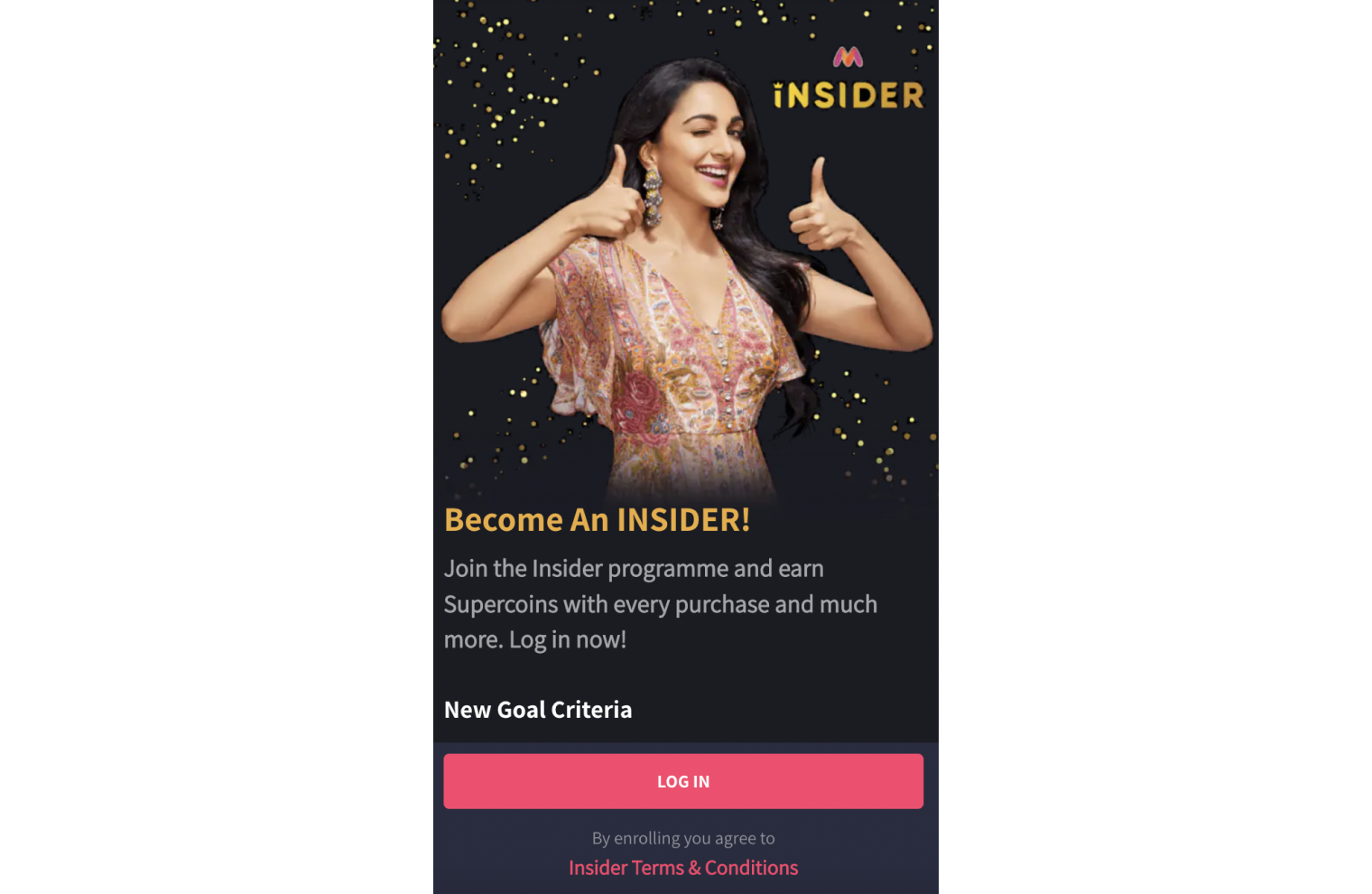
When you think about purchasing from an e-commerce brand, what’s the first thing you do? If you’re like the majority, then chances are you read the product reviews. Studies show that 92% of people trust recommendations from peers over advertisers.
User-generated content (UGC) like reviews, photos, and videos can be used by e-commerce businesses to build a sense of community and garner trust. Email marketing is a great avenue to display and utilize your UGC.
For example, your welcome email to a new subscriber can include photos and reviews of your happy customers. You can send UGC to cart abandoners to show them the highlights of the products and nudge them to make the purchase.
Post-purchase emails are a prime opportunity to solicit UGC from satisfied customers. By asking customers to share their experiences with your products, your brand can generate valuable content that can be used in email and social media campaigns.
But why stop there? Myntra, for example, goes beyond traditional UGC and has created a rewards program called “Myntra Insider” that incentivizes customers to share their experiences with the brand and products. By fostering a community of loyal customers who are passionate about the brand, Myntra is taking UGC to the next level.
Strategy #4: Design Emails That Catch Users’ Attention
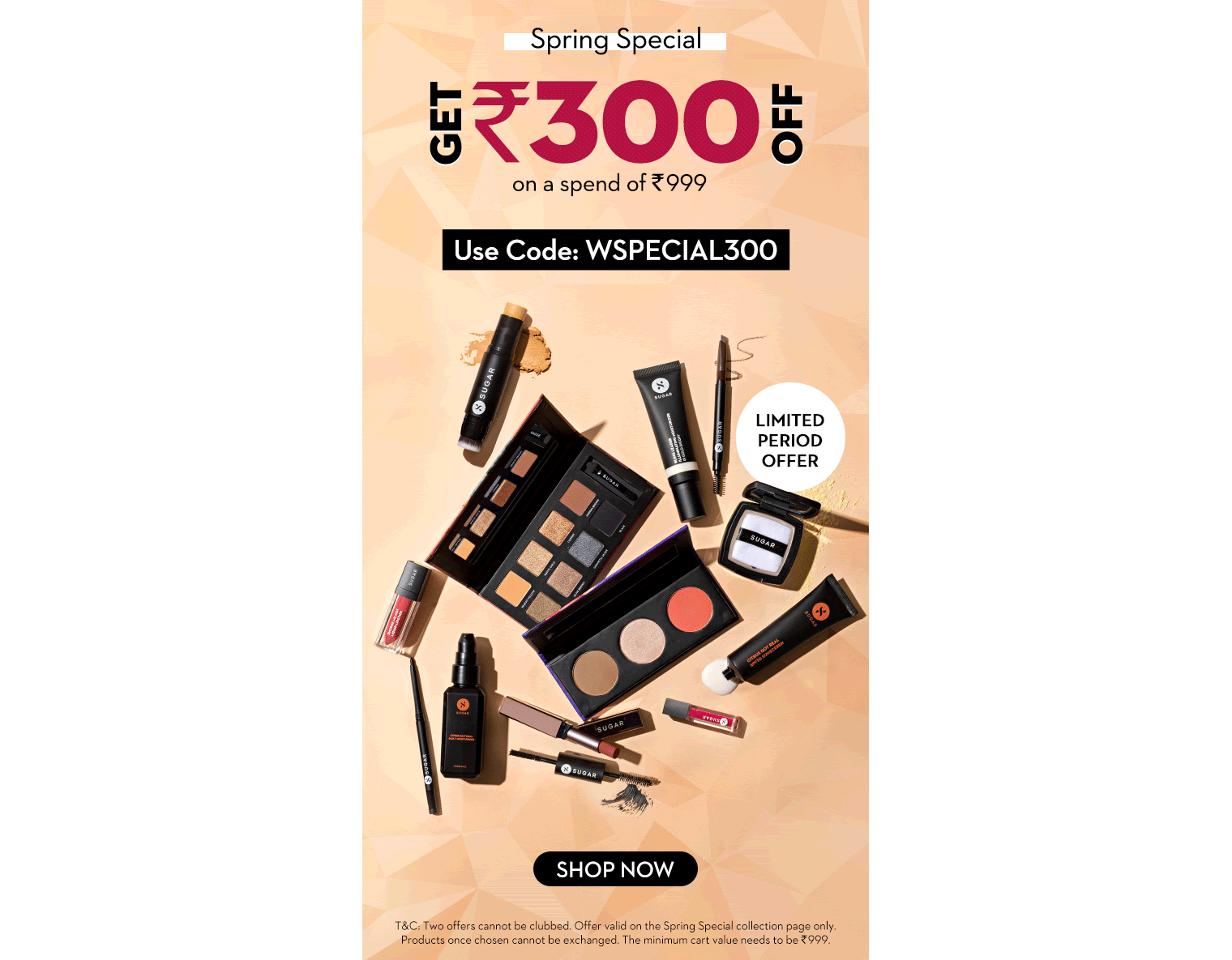
When it comes to e-commerce email marketing, it’s not just what you say that matters, it’s also how you say it. Your emails need to be well-crafted, engaging, and visually appealing. According to a study, 20% of marketers said their email engagement improved with better-designed emails.
One way to make your emails more visually appealing and interactive is by including videos and graphics. In fact, videos can increase click-through rates by a whopping 300%, while graphics can boost open rates by 10%.
Take a cue from Sugar Cosmetics, whose beautifully designed email is a work of art. With its visually appealing and responsive design, the email showcases Sugar products in an attractive way. The clear call-to-action makes it easy for customers to navigate to their website and make a purchase. Don’t underestimate the power of a well-designed email; it could be the key to unlocking higher engagement and sales for your e-commerce brand.
Strategy #5: Craft A Clear And Compelling CTA

It’s hard to pay attention to all the emails we receive every day. That’s why having a clear and concise Call-To-Action (CTA) in your e-commerce emails is more important than ever.
You want your readers to take a specific action, whether it’s purchasing a product, signing up for a newsletter, or downloading an ebook. However, if your CTA is buried within your email or is difficult to understand, your readers are likely to hit the delete button and move on to the next email.
A clear CTA is all about simplicity. Keep your CTA easy to read and find by using a font that’s legible and stands out from the rest of your email. Stick to one clear ask per email to avoid overwhelming your reader and decreasing the likelihood of any action being taken at all.
Your subject line should serve as a preview of what’s inside your email. Make it clear in the subject line what you want your reader to do, and use action-oriented language to encourage them to take that next step.
Take a cue from Nykaa Fashion’s email, which features a big, bold “Explore” button to entice subscribers to take advantage of an attractive offer. By using a prominent and persuasive CTA, they make it easy for their audience to take the desired action.
A clear and concise call to action is vital for any e-commerce email campaign. By keeping it simple, legible, and action-oriented, you can increase the chances of your readers taking the desired action.
Strategy #6: Reward Repeat Customers With Loyalty Programs
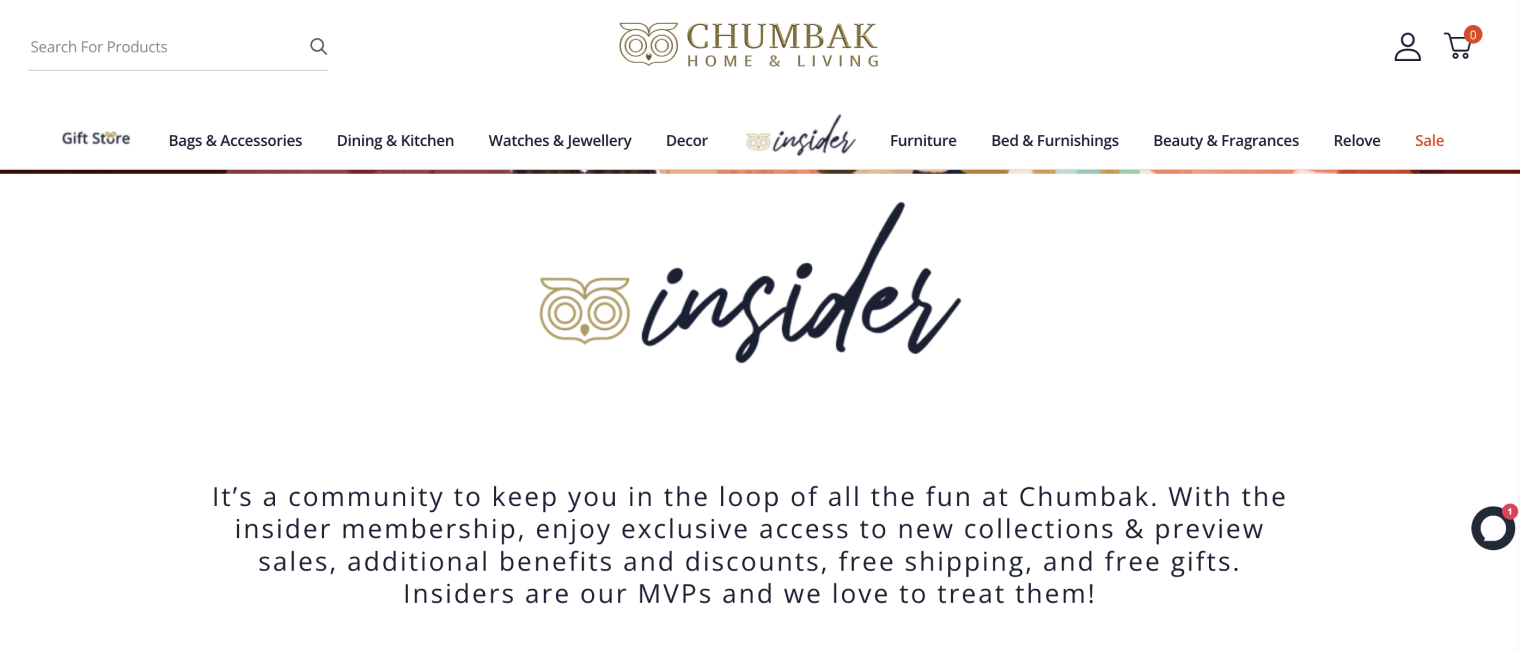
Your loyal customers are your assets. By rewarding customers for repeat purchases, you can motivate them to keep coming back for more. And it doesn’t stop there. They, in turn, will refer your brand to their friends and families, thus building your loyal customer base even further.
Let’s consider Chumbak’s “Insider” community. Once you become a member, you get exclusive access to new collections, discounts, free shipping, and gifts. The company expresses it perfectly when it says that the Insiders are its MVPs (most valuable players).
When it comes to rewards, don’t just settle for discounts. Sure, discounts can be great, but experiential rewards can be even better. Most companies offer discounts. So, wouldn’t your customers be more excited about a once-in-a-lifetime trip to an exotic location or an exclusive meet-and-greet event with a celebrity? For example, Nykaa’s loyalty program, Nykaa Privé, includes rewards like exclusive invites to events.
Strategy #7: Adopt An Email Automation Strategy
Running an e-commerce store can be daunting, with too many things to do. And that’s why streamlining and automating your email marketing campaigns with the help of campaign management tools is extremely important.
With automation, you can keep your email marketing consistent without sacrificing the personal touch that keeps customers interested. Automation tools like WebEngage take the headache out of monitoring customer behavior, communicating with buyers at the right time, and personalizing your messages for different user segments. As a result, you can focus on the growth of your e-commerce business. As a matter of fact, automated emails have been found to generate 320% more revenue than non-automated emails.
WebEngage can help you with all your email automation efforts be it sending welcome emails, abandoned cart reminders, or re-engagement campaigns. Moglix, a B2B e-commerce unicorn, faced challenges with automating user engagement and sending out personalized communication. After adopting the Webengage Retention Operating System, it could send more personalized messages like abandoned cart notifications and real-time order status updates. As a result, Moglix’s ROI improved by 40%, its conversions by cart abandoners increased by 60%, and its email engagement grew by 10% MoM.
Strategy #8: Tempt Buyers With Seasonal And Festive Offers
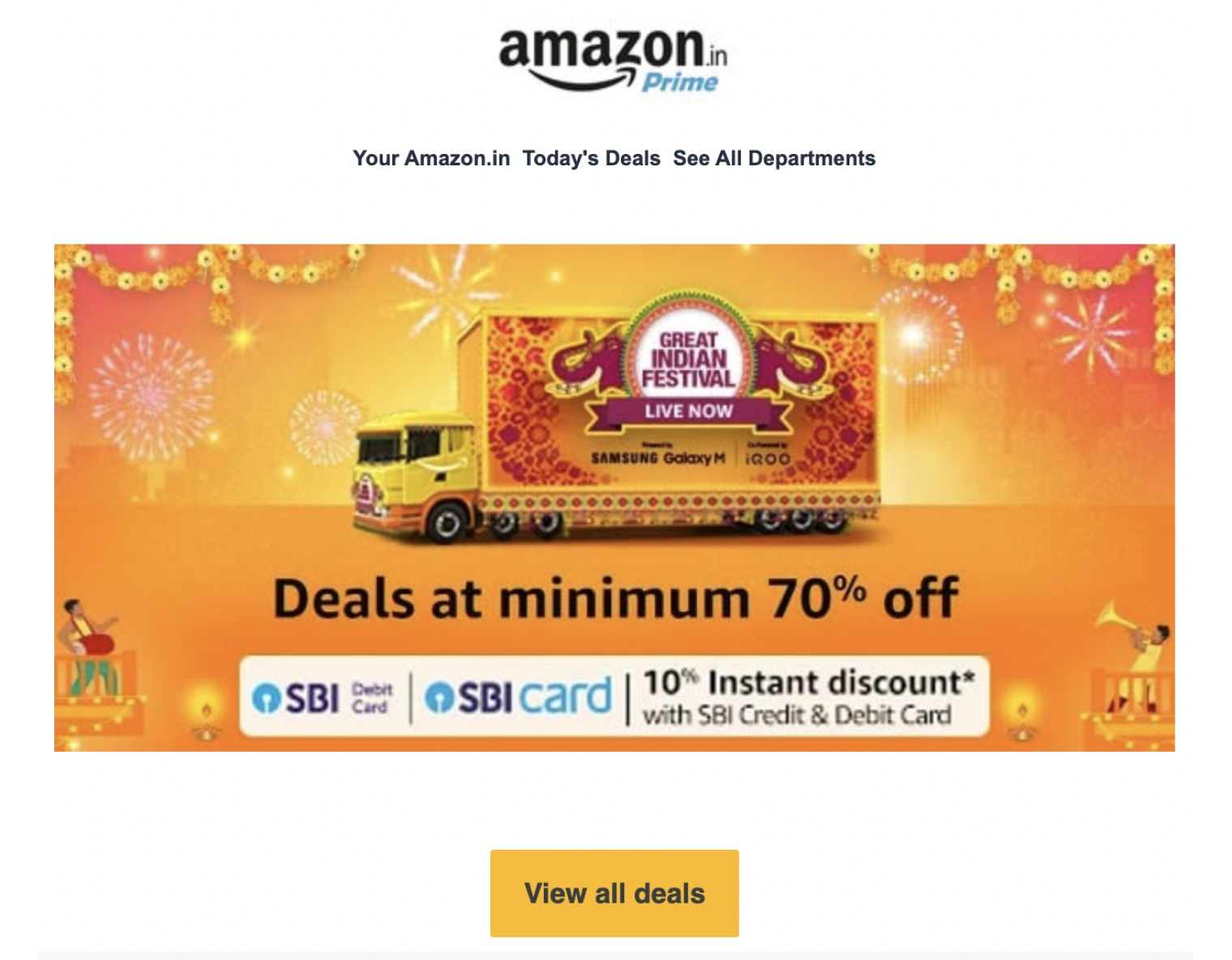
The holiday season is not just a time for gorging on delicacies and celebrating with family. It’s also the perfect time for e-commerce businesses to boost their sales with seasonal email campaigns. These campaigns can significantly boost your bottom line, especially when it comes to attracting customers who are on the hunt for a great deal.
November and December account for a whopping 25% of annual retail sales in the e-commerce industry. In India, autumnal festivities like Durga Puja, Dussehra, and Diwali are the perfect time to send out festive-themed email campaigns that entice customers to purchase.
Start planning your seasonal email campaigns early, and get creative with your promotions. Remember, customers are on the lookout for great deals, so make sure your emails stand out in their inboxes with compelling content and offers they can’t resist.
Strategy #9: Craft A Tempting Abandoned Cart Email Series
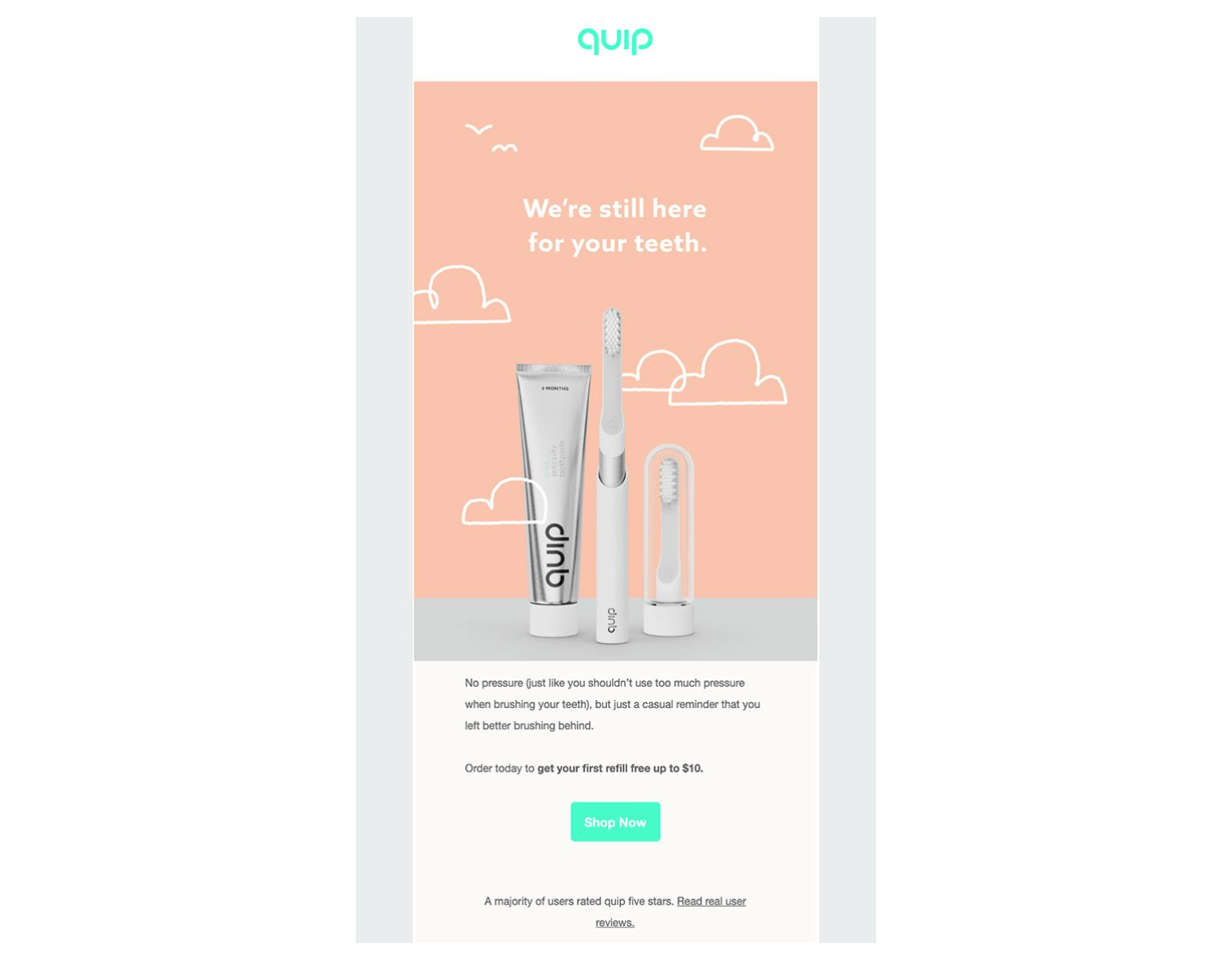
Abandoned carts are a common issue faced by e-commerce businesses, with abandoned cart rates hovering over 72% globally. That’s a lot of missed opportunities. However, the abandoned cart email series is one of the most powerful campaigns to win back customers.
An effective cart abandonment email series usually consists of three emails:
- The first reminds the customer that they left items in their cart.
- The second offers a small discount to incentivize them to complete their purchase.
- The third provides a final nudge with a time-limited offer.
Timing is key when it comes to cart abandonment emails. You don’t want to send them too soon or too late. Research suggests that the most effective approach is sending the first email within an hour of the customer abandoning their cart.
While offering discounts can be an effective incentive, you don’t want to train your customers to abandon their carts in order to receive a discount. Experiment with different types of offers and see what works best for your business.
A catchy subject line can make all the difference in getting your email opened.
For example, consider the abandoned cart email with the witty subject line by the dental hygiene e-commerce business, Quip. The email continues in the same lighter vein in the body. Quip’s email is effective because it is engaging to read, it incentivizes the user with a $10 free refill, and it also shares reviews of satisfied customers to persuade the reader further.
DODuae.com, UAE’s largest online shopping store, witnessed a 14.77% abandoned cart recovery after adopting WebEngage’s campaign management tools. The cart abandonment recovery strategy wasn’t a simple one. It took into account several factors like region-specific abandoned cart emails during the FIFA season (as shown below).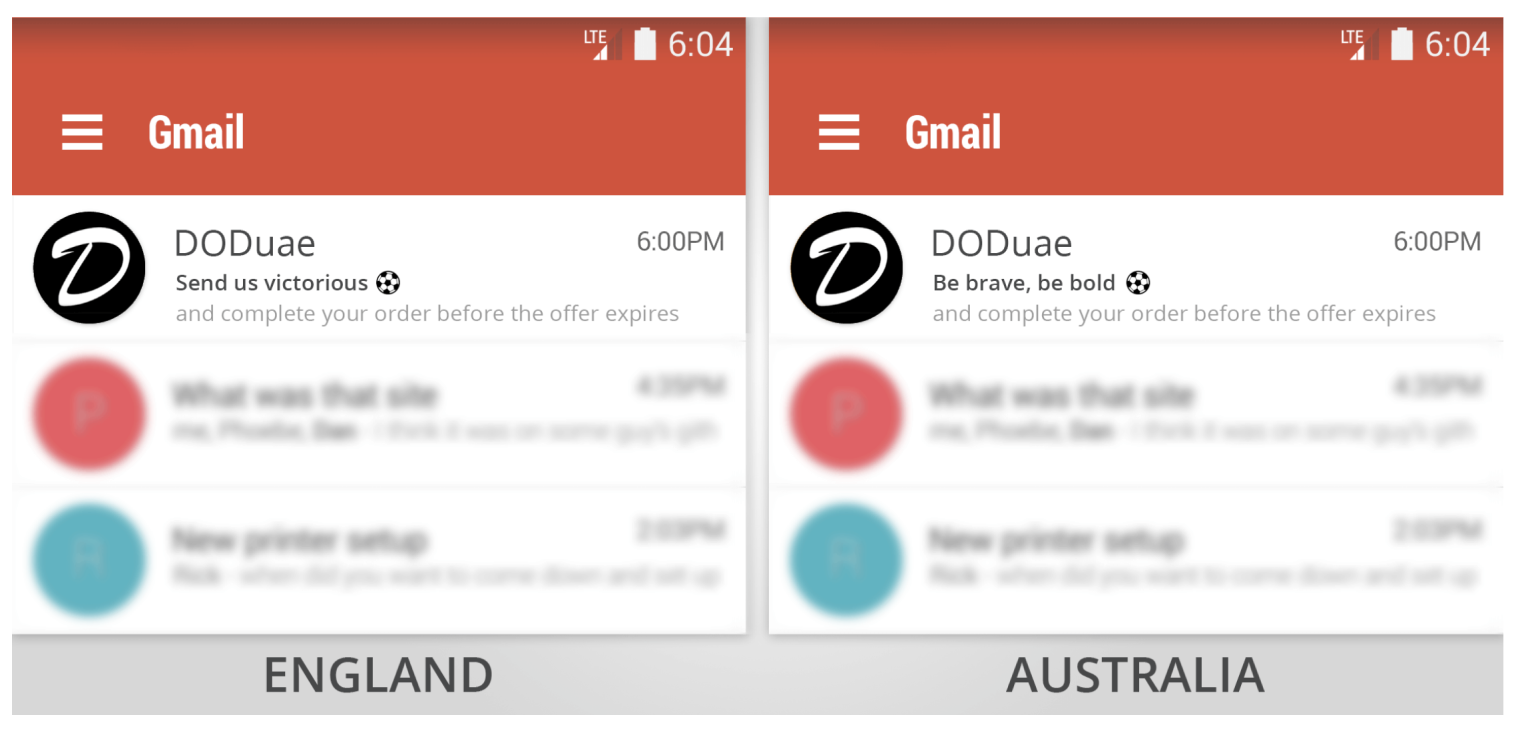
Strategy #10: Test Your Email Campaigns
Split testing and A/B testing are some of the crucial ways to test the effectiveness of your email campaigns. A/B tests can increase your email’s ROI by 82%. When conducting split tests, stick with one variable at a time to avoid confusing your audience by changing too many elements simultaneously. Once you’ve completed your split or A/B tests and have statistically significant results, it’s time to implement the changes.
WebEngage empowers you to test different versions of your email campaigns with its A/B and multivariate testing and get customer insights. As a result, you can send your audience the most impactful and persuasive e-commerce emails.
ApnaKlub, an agent-led B2B wholesale platform, enrolled in the WebEngage Startup Program to build better customer communications and brand engagement. With the help of WebEngage’s analytics, ApnaKlub tracked important metrics such as open rates, conversion rates, revenue generated, etc. As a result, the company witnessed a 30% increase in month-on-month repeat orders and a 23% boost in the push notifications click-through rates.
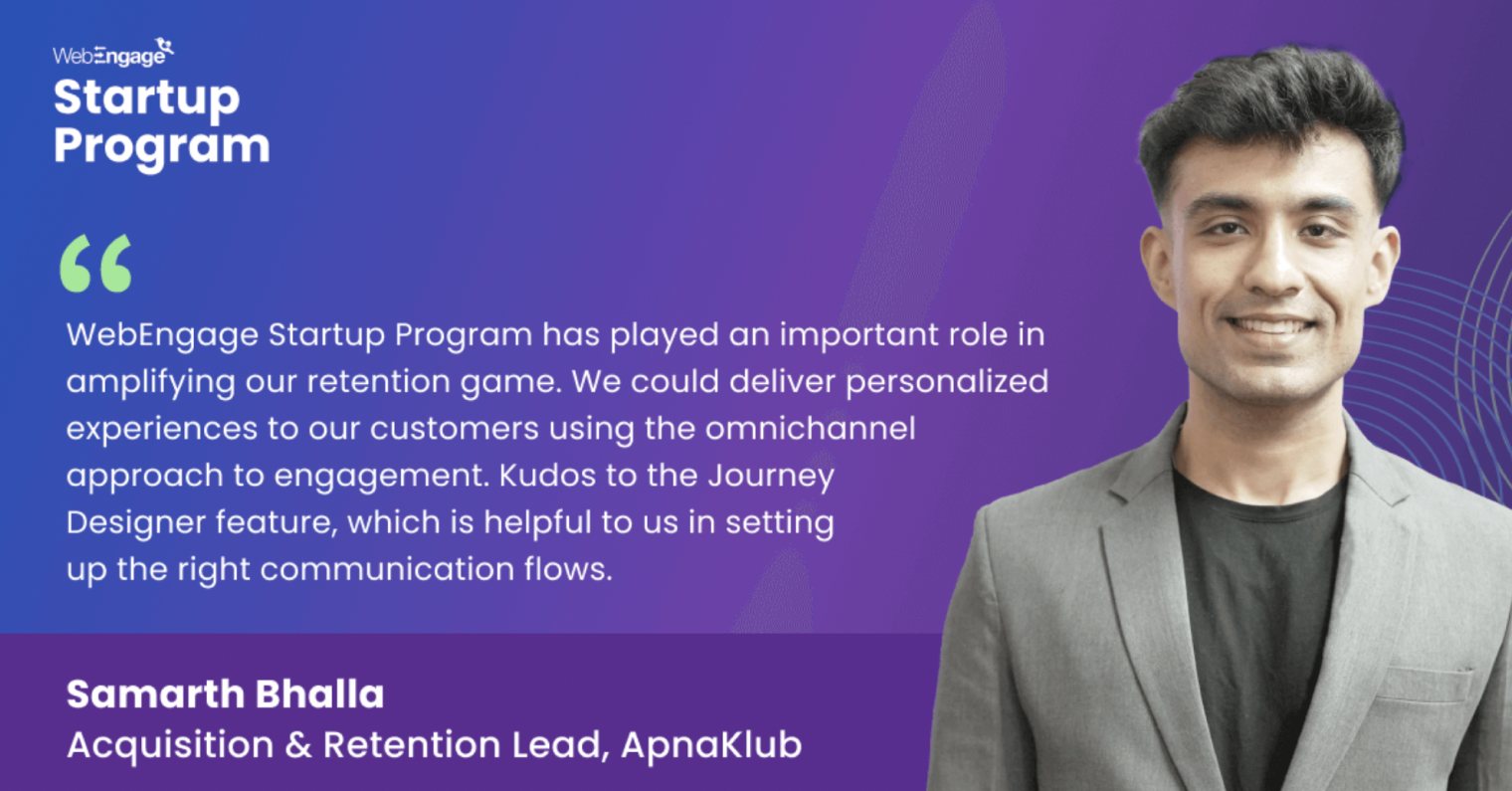
Final Thoughts
In the fast-paced world of e-commerce, email marketing is a tried and tested method for engaging with customers and boosting sales. However, achieving the right balance between informative content and promotional messaging is essential for success. Done right, email marketing can elevate your e-commerce brand’s reputation as an authoritative industry leader and convert leads into loyal customers.
Our compilation of the above ten tried and tested tactics is tailored to the unique email marketing needs of e-commerce companies. But why stop there? At WebEngage, we offer an email marketing platform that can take your campaigns to the next level. With a user-friendly drag-and-drop interface, hyper-personalization options, A/B testing, and more, our platform has helped many e-commerce clients achieve exceptional results.
Don’t just take our word for it – book a demo with us today and experience the difference for yourself.








 Prakhya Nair
Prakhya Nair
 Diksha Dwivedi
Diksha Dwivedi
